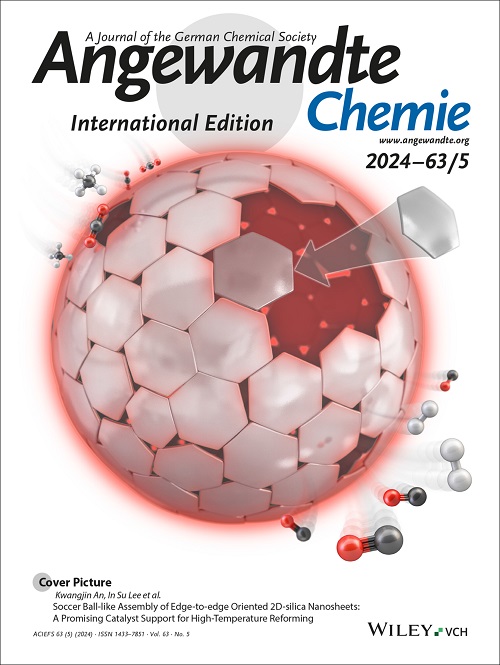缺电子烯烃对映选择性硅氢化/氢芽化的光催化与手性Lewis酸催化融合。
IF 16.1
1区 化学
Q1 CHEMISTRY, MULTIDISCIPLINARY
引用次数: 0
摘要
有机硅化合物在许多领域都有广泛的应用。过渡金属催化的不对称硅氢化反应是合成手性有机硅化合物最常用和最有效的方法之一,但它主要依赖于富电子烯烃和结构特异性的氢硅烷。可见光光催化已成为一个很有前途的硅氢化新平台。然而,光诱导不对称硅氢化反应的对映控制是一个巨大的挑战。在此,我们报道了一种协同催化策略,通过将蒽醌作为双任务光催化剂与手性刘易斯酸催化剂合并,实现了缺电子烯烃的对映选择性硅氢化反应。该方案显示了广泛的氢硅烷范围,具有高效的化学、区域和对映体选择性,可提供多种富含对映体的有机硅化合物,这些化合物可以很容易地转化为一系列药物分子。机理研究表明,光催化剂与烯烃之间的π-π相互作用是控制对映体的关键。此外,在可见光诱导的协同催化下,还实现了对映选择性自由基氢化反应。本文章由计算机程序翻译,如有差异,请以英文原文为准。
Merging Photocatalysis with Chiral Lewis Acid Catalysis for Enantioselective Hydrosilylation/Hydrogermylation of Electron-Deficient Alkenes.
Organosilicon compounds demonstrate widespread applications in many fields. Transition-metal-catalyzed asymmetric hydrosilylation represents one of the most common and effective methods to synthesize chiral organosilicon compounds, but it largely relies on electron-rich alkenes and structurally specific hydrosilanes. Visible light photocatalysis has emerged as a promising new platform for hydrosilylation. However, the enantiocontrol of photoinduced asymmetric hydrosilylation concerning highly reactive radical species is a great challenge. Herein, we report a synergistic catalytic strategy for enantioselective hydrosilylation of electron-deficient alkenes by merging anthraquinone as a dual-tasked photocatalyst with a chiral Lewis acid catalyst. This protocol shows broad hydrosilane scope with efficient chemo-, regio- and enantioselectivities, delivering diverse enantioenriched organosilicon compounds, which could be readily converted into a series of medicine molecules. Mechanistic studies reveal that the π-π interaction between the photocatalyst and the alkene is crucial for enantiocontrol. Additionally, enantioselective radical hydrogermylation was also achieved under the visible light photoinduced synergistic catalysis.
求助全文
通过发布文献求助,成功后即可免费获取论文全文。
去求助
来源期刊
CiteScore
26.60
自引率
6.60%
发文量
3549
审稿时长
1.5 months
期刊介绍:
Angewandte Chemie, a journal of the German Chemical Society (GDCh), maintains a leading position among scholarly journals in general chemistry with an impressive Impact Factor of 16.6 (2022 Journal Citation Reports, Clarivate, 2023). Published weekly in a reader-friendly format, it features new articles almost every day. Established in 1887, Angewandte Chemie is a prominent chemistry journal, offering a dynamic blend of Review-type articles, Highlights, Communications, and Research Articles on a weekly basis, making it unique in the field.

 求助内容:
求助内容: 应助结果提醒方式:
应助结果提醒方式:


